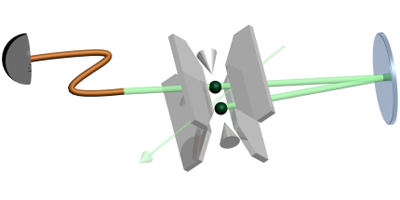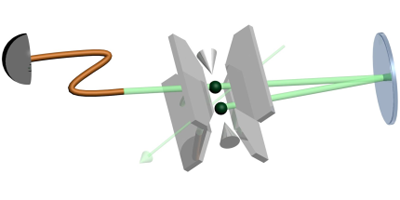One is Better than Two, at Least When it Comes to Photons
Entanglement of atoms and other quantum objects is a fundamental resource in the field of quantum information. In 1999, Carlos Cabrillo and colleagues proposed that spatially separated atoms could be entangled through interference and detection of a single photon. In their method, the two atoms are driven to a short-lived excited state from where they decay via spontaneous emission of a photon to a metastable excited state. If only one atom undergoes this process, then only one photon is emitted from the two atoms. If a detector detects this photon, and it cannot distinguish which atom the photon came from, then an entangled state is created.
The idea sounds simple, however, it has one major limiting factor. If both atoms get excited and two photons are emitted then no entanglement occurs. Writing in Physical Review Letters, Lukáš Slodička at the University of Innsbruck, Austria, and colleagues show that this problem can be overcome, and they demonstrate the first experimental realization of this two-atom entanglement scheme.
The authors solve the two-photon emission problem by making sure that the probability of both atoms being in the excited state is negligibly small. Slodička et al. trap and cool the atoms. They then use inelastic scattering to excite the atoms and produce a single photon by spontaneous emission. The photons emitted from the two atoms are spatially overlapped using a mirror to make them indistinguishable.
The entanglement of two atoms by the emission and detection of a single photon offers a route to higher rates of entanglement generation than can be currently achieved using alternative methods. Efficient entanglement generation between spatially separated objects is key if quantum computers are to become a reality. – Katherine Thomas





